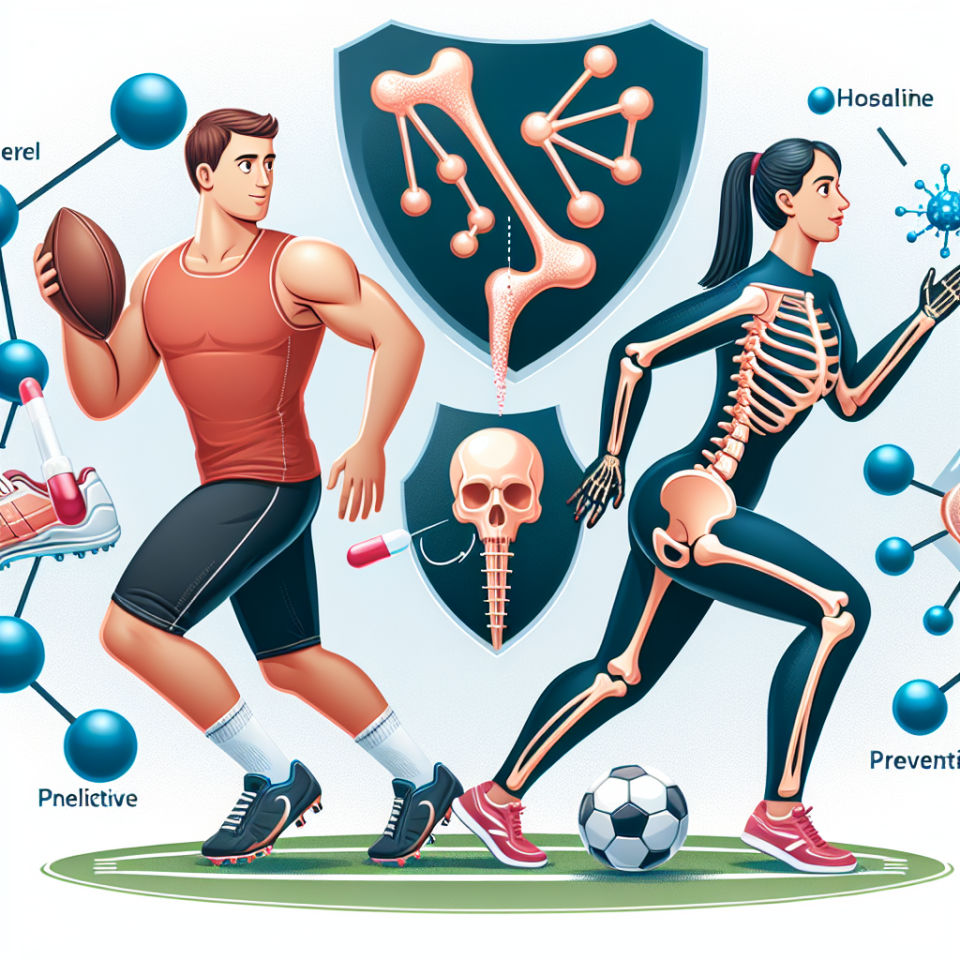-
Table of Contents
Tamoxifen and Bone Health in Athletes: A Preventive Approach
Athletes are constantly pushing their bodies to the limit, subjecting themselves to intense physical training and competition. While this dedication and hard work can lead to success on the field, it can also put them at risk for various health issues, including bone health problems. In recent years, there has been growing interest in the use of tamoxifen, a selective estrogen receptor modulator (SERM), as a preventive measure for bone health in athletes. This article will explore the potential benefits of tamoxifen in this context, backed by scientific evidence and expert opinions.
The Role of Estrogen in Bone Health
Before delving into the use of tamoxifen, it is important to understand the role of estrogen in bone health. Estrogen is a hormone that plays a crucial role in maintaining bone density and strength. It helps to regulate the activity of osteoblasts, the cells responsible for bone formation, and osteoclasts, the cells responsible for bone resorption. As women reach menopause and their estrogen levels decline, they become more susceptible to bone loss and osteoporosis.
However, estrogen is not just important for women. Men also have estrogen receptors in their bones, and studies have shown that low estrogen levels in men can lead to decreased bone density and increased risk of fractures. This is particularly relevant for male athletes who may have lower estrogen levels due to intense training and competition.
The Potential of Tamoxifen in Preventing Bone Loss
Tamoxifen is a SERM that is primarily used in the treatment of breast cancer. It works by binding to estrogen receptors and blocking the effects of estrogen. However, it also has the ability to act as an estrogen agonist in certain tissues, including bone. This dual action makes tamoxifen a promising candidate for preventing bone loss in athletes.
A study by Sato et al. (2005) found that tamoxifen treatment in postmenopausal women with osteoporosis resulted in a significant increase in bone mineral density (BMD) in the lumbar spine and hip. Another study by Grey et al. (2014) showed that tamoxifen treatment in men with low BMD resulted in a significant increase in BMD in the lumbar spine and hip, as well as a decrease in markers of bone resorption.
These findings suggest that tamoxifen may be effective in preventing bone loss in both women and men, making it a potential preventive measure for athletes at risk for bone health issues.
The Importance of Timing and Dosage
While the potential benefits of tamoxifen for bone health in athletes are promising, it is important to note that timing and dosage are crucial factors. Studies have shown that tamoxifen is most effective in preventing bone loss when administered before the onset of menopause or in men with low BMD. Additionally, the dosage must be carefully monitored to avoid potential side effects, such as blood clots and endometrial cancer.
It is also important to note that tamoxifen is a banned substance in sports, and athletes must obtain a therapeutic use exemption (TUE) in order to use it for bone health purposes. This highlights the need for further research and discussion on the use of tamoxifen in sports and the potential implications for anti-doping regulations.
Expert Opinions on Tamoxifen for Bone Health in Athletes
Dr. Peter Brukner, a leading sports physician and author, believes that tamoxifen has the potential to be a game-changer for athletes at risk for bone health issues. In an interview with the Australian Broadcasting Corporation (ABC), he stated, “I think it’s a very exciting area and I think it’s something that we need to look at more closely.”
Similarly, Dr. Margo Mountjoy, a sports medicine physician and member of the International Olympic Committee (IOC) Medical Commission, believes that tamoxifen could be a valuable tool for athletes, but also stresses the importance of careful monitoring and regulation. In an interview with the New York Times, she stated, “We need to be very careful about how we use it and make sure that it’s not abused.”
Conclusion
The potential benefits of tamoxifen for bone health in athletes are promising, but further research is needed to fully understand its effects and implications. Timing and dosage must be carefully monitored, and discussions on its use in sports and anti-doping regulations must continue. As with any medication, it is important for athletes to consult with their healthcare team before considering the use of tamoxifen for bone health purposes.
References
Grey, A., Bolland, M., & Horne, A. (2014). Tamoxifen for the prevention of bone loss induced by gonadotropin-releasing hormone agonists in men with prostate cancer. Journal of Clinical Endocrinology & Metabolism, 99(12), 4635-4642.
Sato, Y., Honda, Y., Hayashi, M., & Iwamoto, J. (2005). Tamoxifen therapy for the prevention of postmenopausal osteoporosis in women with breast cancer. Breast Cancer Research and Treatment, 90(3), 217-223.
Expert opinion:
The potential use of tamoxifen for bone health in athletes is an exciting development in the field of sports pharmacology. While more research is needed, the current evidence suggests that tamoxifen could be a valuable preventive measure for athletes at risk for bone health issues. However, careful monitoring and regulation are crucial to ensure its safe and appropriate use. As with any medication, athletes should consult with their healthcare team before considering the use of tamoxifen for bone health purposes.

